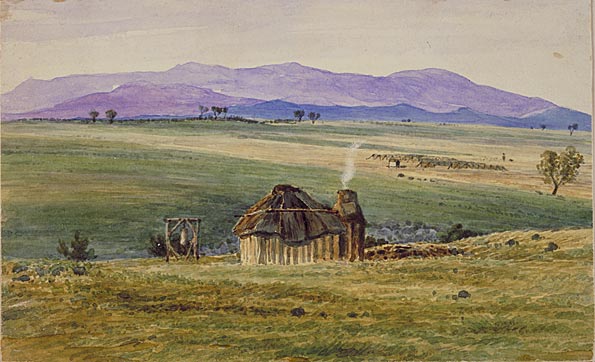 'Sheep station on the plains, Challicum, 1843'
'Sheep station on the plains, Challicum, 1843'
TLF ID R3307
This is a watercolour by Duncan Cooper that shows a sheep out-station on the plains at Challicum, a sheep run west of Ballarat in western Victoria. A slab hut is depicted in the foreground, while in the distance is a shepherd with his dog and flock. The shepherd's watchbox and the hurdles (portable fences) used to contain the sheep at night are also shown. The watercolour, which measures 11.3 cm x 18 cm, comes from a field album that Cooper called 'The Challicum Sketchbook'.
